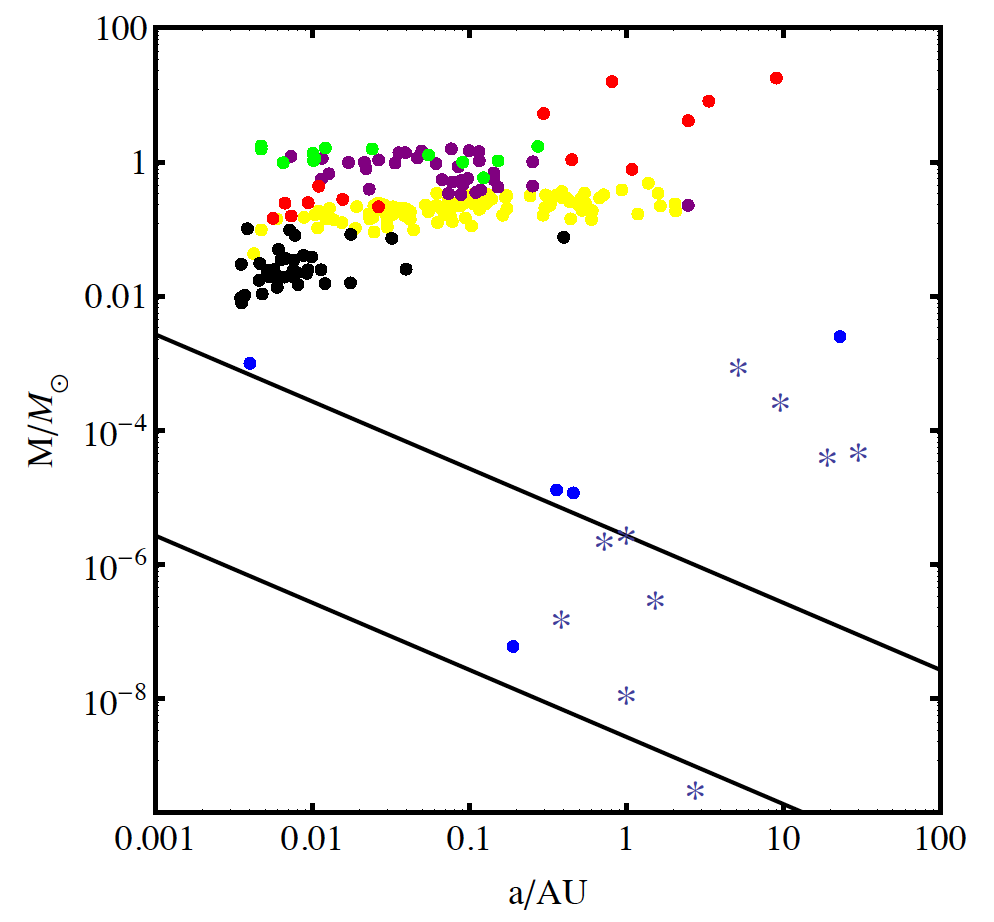Editor’s note: Astrobites is a graduate-student-run organization that digests astrophysical literature for undergraduate students. As part of the new partnership between the AAS and astrobites, we will be reposting astrobites content here at AAS Nova once a week. We hope you enjoy this post from astrobites; the original can be viewed at astrobites.org!
Title: Why Are Pulsar Planets Rare?
Authors: Rebecca G. Martin, Mario Livio, and Divya Palaniswamy
First Author’s Institution: University of Nevada Las Vegas
Status: Accepted to ApJ
Pulsar planets were the first type of planet ever discovered beyond the solar system, and this discovery shocked the astronomical world. These were not the planets we expected: solar system-like planets around a Sun-like star. Instead, these planets orbited a pulsar, a rapidly rotating neutron star (the extremely dense core of a massive star that exploded as a supernova). However, since their initial discovery in 1992, only five such pulsar planets have been found, making them quite rare. Fewer than 1% of pulsars have been found to host planets. In this paper, the authors explore how these planets may have formed as a way to explain the rarity of pulsar planets.

Figure 1: The mass and semi-major axis of pulsar companions in colored circles (blue for confirmed planets, red for main-sequence stars, black for low-mass stars and brown dwarfs, green for neutron stars, purple for heavy white dwarfs, and yellow for low-mass white dwarfs). The violet asterisks are our eight solar-system planets, the Moon, and the asteroid-belt dwarf planet Ceres, for reference. The black lines are the detection limits for fast millisecond pulsars (bottom line) and more normal pulsars (top line). [Martin et al. 2016]
Formation scenarios
- Planets that survive the supernova: The most obvious formation scenario is that the planets formed simultaneously with the original star just like our own solar system. However, many astronomers believe that stars above three solar masses (3x the mass of the Sun) can’t form planets, and stars that supernova into neutron stars are at least eight solar masses. Even if they could form, the planet would have to avoid being eaten when the star swells up into a red supergiant and then stick around after the supernova explosion removes most of the mass from the system, an unlikely scenario.
- Supernova fallback disk: After the supernova, some of the material falls back into a disk where, just like with a protoplanetary disk, it might form planets. However, this “fallback disk” is expected to have little angular momentum, which means the material likely doesn’t have enough rotational speed to avoid falling back directly onto the neutron star. (For example, a rocket shot vertically up would fall back down to Earth. It needs “sideways” velocity to get into orbit and avoid hitting the Earth.)
- Destruction of a companion star: A low-mass companion star orbiting a neutron star loses mass through evaporation — which, if strong enough, can entirely destroy the star. The star’s debris can then form a disk orbiting the neutron star with a mass about 10% the mass of Earth.
- Evaporation of a companion: An alternative outcome of evaporation from the intense pulsar radiation is that the companion star just loses so much mass that it is reduced down to planetary size.
![Artist's illustration of a binary system in which the left star is exploding as a supernova. [ESA/Justyn R. Maund (University of Cambridge)]](https://aasnova.org/wp-content/uploads/2016/10/607582main_hubble_supernove_full-260x217.jpg)
Artist’s illustration of a binary system in which the left star is exploding as a supernova. [ESA/Justyn R. Maund (University of Cambridge)]
In the case of a star being disrupted and forming a disk, the disk receives intense radiation from the pulsar that heats and helps evaporate the disk. If the surface density of a disk is very large, dead zones are formed in the disk where material is able to build up to form planets. Disks with a lower surface density are not able to effectively shield the disk to prevent its evaporation and therefore cannot form any planets. Only when the companion star is disrupted into a massive enough disk is there a real possibility of a planet then forming.
Results
Only under a very specific set of circumstances can planets form around pulsars. They require a companion star with a low mass, which only about 10% of neutron star progenitors have. Of these, only 10% can then survive the supernova explosion. Of the survivors, some may be evaporated into a planetary mass, while others may be disrupted by the pulsar. In the case of disruption, the subsequent disk then needs to be dense enough to withstand the intense pulsar radiation long enough to create stars.
Out of the five pulsar planets known, the authors believe that the three planets in the PSR 1257+12 system were formed from the disk of a disrupted star, the planet orbiting PSR J1719-1438 is the core of an evaporated white dwarf, and the planet around PSR B1620-26 was captured along with its white dwarf, with the planet now orbiting both of them as a circumbinary planet.
About the author, Joseph Schmitt:
I’m a 5th year graduate student at Yale University. My main research is on the discovery, characterization, and statistics of exoplanets. I’m also one of the science leads on the citizen science project Planet Hunters, a website where the general public can join the search for exoplanets.


2 Comments
Pingback: pulsar planet paucity
Pingback: Waarom zijn pulsarplaneten zo zeldzaam?